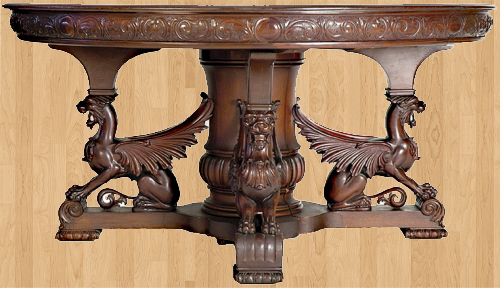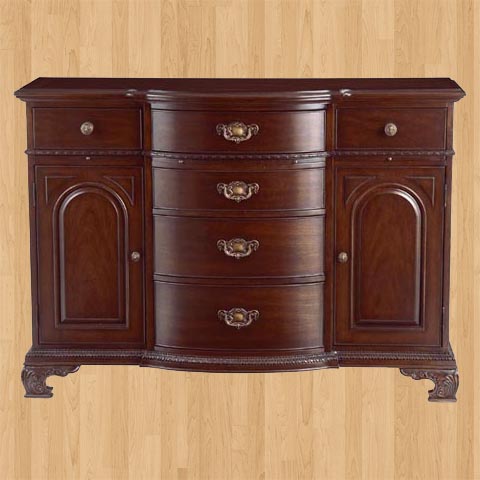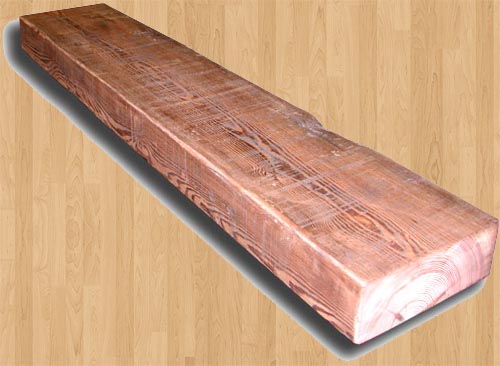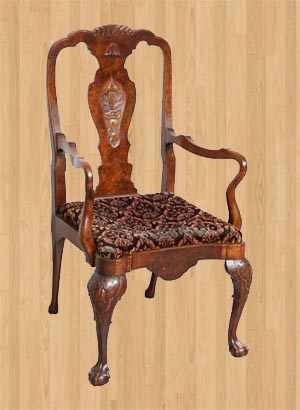Taking care of wood and wooden furniture goes far beyond cleaning and dusting. Wood reacts to environmental changes, such as moisture, temperature and light. The wood care tips below should help you to preserve your wooden furniture, wood cabinets, or any other wood products you have.
The Sun
The sun can have extremely detrimental effects on wood and wood finishes. Ultraviolet rays can destroy a piece of beauty in a matter of a few weeks to months. These rays penetrate the molecular structure of the finishes, the color, and the wood itself. In this process, color will change rapidly. Finishes will begin to crack or separate in the form of hairline splits, or begin to look like alligator skin. It is best to keep wood away from direct sunlight in all cases. If this is unavoidable, use blinds, shades, or UV window protection to keep the sun from directly shining on your wood product.
Temperature & Humidity
Both of these factors can also have adverse effects on furniture or cabinets. Wood, whether finished or not, absorbs whatever its surroundings have to offer. Dryness will shrink wood and eventually cause it to split from lack of moisture. Too much moisture, on the other hand, can swell wood and also cause it to crack and or split from stress. As a general rule of thumb, if you are comfortable in your surroundings, your furniture should be fine. Do not use rubber or plastic feet under anything you might place on a table as this can cause what is called "plasticizer migration" and will make your tabletop look strange.
Ventilation outlets in your house should not have furniture in front of them or too close by. Heating and air conditioning vents create a temperature variance that is too extreme for furniture or cabinets. Place your furniture in an area that will allow the look you want, but yet safe from the sun and extreme temperature variance. In the seasons where the windows can be open and natural airflow can come through your house (which we all love), be certain that you are protected from water droplets coming through your window onto your furniture.
Ever notice in the winter, that those "sticky" drawers suddenly loosened up? This is nothing more that lack of humidity, and is one of the effects on wood. The wood literally shrinks, allowing more freedom of movement. This is why it is crucial to keep an even temperature and humidity level in your home.
Finishes
There is a multitude of finish types today, ranging from natural oil all the way to polyurethane. Find out  what kind of finish you have when you purchase new or used furniture, or when you refinish older pieces. This can make the difference between setting a glass of water down and leaving it with no damage, or destroying good furniture.
what kind of finish you have when you purchase new or used furniture, or when you refinish older pieces. This can make the difference between setting a glass of water down and leaving it with no damage, or destroying good furniture.
Varnish finishes from the past offered a little protection, but not a lot. Newer finishes such as pre-catalyzed and post-catalyzed lacquers can offer a lot of protection against damage from cold glasses being set down with no coaster, as well as warm items like plates or coffee cups. Nothing HOT should be placed on any finished wooden furniture.
Great care should be taken when using solvents such as alcohol, nail polish remover, perfume/cologne, or any toxic chemical around fine furniture. Nail polish remover is nothing more than liquid paint/finish remover in a small bottle, and will remove finish in an instant. An investment in fine furniture can turn to a nightmare in a short time if the wrong liquid is spilled, or any other type of spill is not taken care of promptly. On the other hand, it can be an investment that will bring you enjoyment for years to come if cared for properly.
Polishing & Clean Up
The type of finish you have will determine the method of polishing needed. With an oil finish only, dust and re-apply oil. With older  finishes that are just beginning to show their age, a polish with lemon oil is appropriate. With newer finishes, applying oil is doing nothing more than giving you that greasy feeling. Most polishes today have silicone in them as well as wax. You should dust or clean before polishing. Contaminants are always airborne in a home. Dust, grease from cooking, hand oils, etc. will always be there. Dust first, THEN polish, so you don't grind in these elements.
finishes that are just beginning to show their age, a polish with lemon oil is appropriate. With newer finishes, applying oil is doing nothing more than giving you that greasy feeling. Most polishes today have silicone in them as well as wax. You should dust or clean before polishing. Contaminants are always airborne in a home. Dust, grease from cooking, hand oils, etc. will always be there. Dust first, THEN polish, so you don't grind in these elements.
What polish should you buy? Most polishes today are fairly similar, but some are better than others. You want to find one that freshens up the look and has a mild abrasive in it to remove some of the old wax previously applied. It leaves a smooth look and is not greasy when wiped off with a clean rag after spreading.
